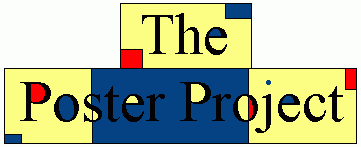
|
|

|
Theorem TwoorZeno's Paradoxes, Sequences and Infinite SumsIn "theorem" 2 I proved that movement was impossible. Which it isn't, at least as far as I know (but I don't have a good mathematical proof...) This problem is one of a series of famous paradoxes created by an ancient Greek philosopher (those Ancient Greeks are everywhere!) named Zeno of Elea. It is, in fact, Zeno's Second Paradox. To fully resolve Zeno's paradoxes, we need to understand modern conceptions of limits and infinite sums. You can read more about limits on the Analysis page, but one thing to bear in mind is that here I am talking about the limit of a sequence (as opposed to the limit of a function, as I am on the Analysis page). An infinite sequence is an ordered sequence of numbers that goes on forever.
By the limit of a sequence I mean that number which the terms in the sequence get closer and closer to the further along the sequence you go. Not all sequences have limits, and even if a sequence has a limit it is important to realize that the numbers in the sequence may never get to that limit. If you've read the Analysis page, you may be shaking your head and saying that all this hand-waving isn't very precise. You'd be right. Let me try and rectify this. I'll say the number L is the limit of a sequence if for every small but non-zero number there exists another (probably quite big) number n so that the distance between L and every term in the sequence after the nth is less than the small but non-zero number. Compare this definiton with the rigorous definiton of the limit for a function. Can you see the similarites? What if you think of the small but non-zero number as having a name, might I suggest ... e? Can you draw a picture to illustrate this definition: here your "function" will have to be a series of "dots," and you will need to use the non-negative integers on the x-axis to represent the position of a given term in the sequence. Look at the sequences I gave above. Which have limits? What are the limits of those that have? Check my answers when you're done. An infinite sum is a sum which has an infinite number of summands. (The summands are the things being added, the numbers between the plus signs. For example, in the equation 2+3=5, the summands are 2 and 3.) Infinite sums are closely allied to notions of sequences and their limits. In fact, infinite sums can be thought of as the limit of a particular sequence: the sequence whose nth term is the sum of the first n summands of the sum. Let's look at an example. Suppose I want to know the following infinite sum: 0 + 1/2 + 1/4 + 1/8 + ...To calculate this sum, I need to work out the sequence to which it corresponds: 0, 1/2, 3/4, 7/8, ...Notice how each term in the sequence corresponds to summing the first few terms of the sum. Now the limit of this sequence is 1 and so we conclude that: 0 + 1/2 + 1/4 + 1/8 + ... = 1Take a moment to think about this. We have summed infinitely many things, but come up with something finite! Remember, not all sequences have finite limits and so many infinite sums will not be finite. Can you calculate these infinite sums:
Let's take a moment to catch our breath. Good. Now what does all of this have to do with Zeno's paradoxes? Well, let's review the key paragraph from my "proof": ... following this reasoning it is clear that Achilles can never overtake the poor, old, weak tortoise who must, therefore, win the race! This is clearly impossible, and so our starting assumption -- that movement was possible -- must be wrong.What assumption underlies this reasoning? I assumed that the sum of the (tiny) periods of time it takes Achilles to move to the tortoise's last position is infinite! Or at least long enough for the race to take place. We have now seen that infinite sums need not be infinte! Let's put some numbers to the example. Suppose Achilles is twenty times faster than the tortoise (a reasonable number to choose, given the might of Achilles). Remember, the tortoise had a head start of twenty feet. So in the time it takes Achilles to cover twenty feet the tortoise will have moved 1/20 of 20 feet, or 1 foot. In the time it takes Achilles to cover one foot, the tortoise moves 1/20th of a foot, and in the time it takes Achilles to cover 1/20th of a foot, the tortoise moves 1/400th of a foot, etc. In other words we can write the distance between Achilles and the tortoise as an infinite sum: 20 + 1 + 1/20 + 1/400 + ...which we can now calculate: 20 + 1 + 1/20 + 1/400 + ... = 21 and 1/19In other words, provided that the distance over which Achilles and the tortoise race is at least 21 and 1/19 feet long, Achilles will definitely catch the tortoise and win the race. In fact, looking at the numbers, Achilles will catch the tortoise before the poor animal has moved two feet! Doesn't that restore your faith? Here are two more of Zeno's paradoxes:
You can read more about Zeno in the the MacTutor History of Mathematics Archive. And you can play an interactive version of the tortoise and Achilles hosted by the Shodor Education Foundation. 
|